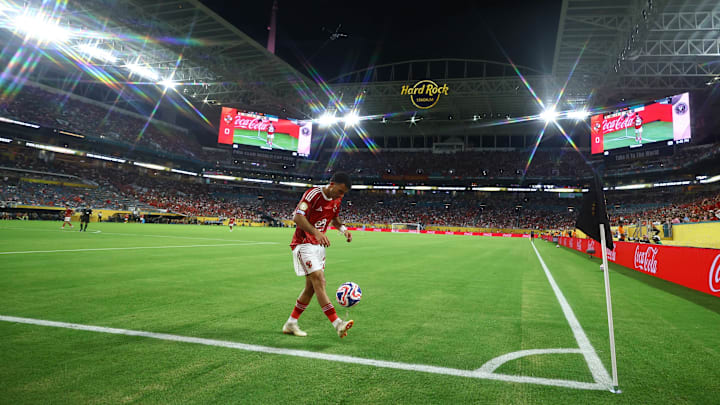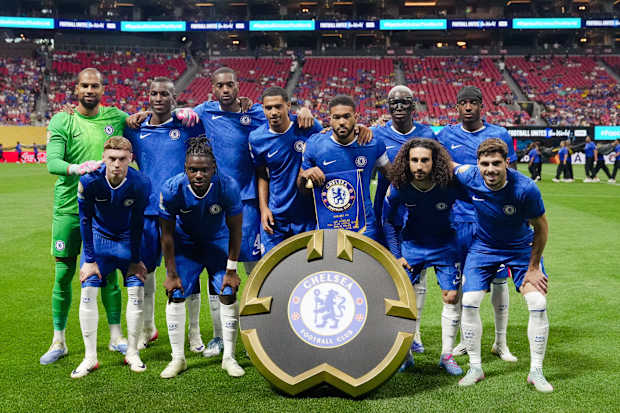Club World Cup Struggles with Disappointing Attendance as Empty Seats Dominate Stadiums

Gianni Infantino might have been preoccupied with presenting iShowSpeed the symbolic keys to football's kingdom, but the numerous vacant seats scattered throughout Atlanta's Mercedes-Benz Stadium on Monday painted an unflattering picture for his pet project.
Infantino's redesigned FIFA Club World Cup has faced criticism from skeptics who view it as nothing but a financial venture, though others have embraced the concept as an opportunity for global teams to demonstrate their abilities against dominant European powerhouses.
The United States was selected as the host country one year prior to the World Cup's return to North America. This summer's competition might serve as a rehearsal for 2026 when passionate fans from 48 countries will converge on 16 cities throughout the U.S., Canada and Mexico.
Five venues proposed for next summer's major celebration are currently being utilized for this Club World Cup, yet fan response has been lukewarm at most. The most memorable moments have primarily come from visiting South American and North African supporters, but the ideal scenario Infantino apparently envisioned has not yet materialized.
What explains the abundance of unoccupied seats?
Attendances at the 2025 Club World Cup So Far
Fixture | Location | Attendance | % of Capacity |
|---|---|---|---|
Al Ahly vs. Inter Miami | Hard Rock Stadium, Miami | 60,927 | 93 |
Bayern Munich vs. Auckland City | TQL Stadium, Cincinnati | 21,152 | 81 |
PSG vs. Atletico Madrid | Rose Bowl, Pasadena | 80,619 | 90 |
Palmeiras vs. Porto | MetLife Stadium, East Rutherford | 46,275 | 56 |
Botafogo vs. Seattle Sounders | Lumen Field, Seattle | 30,151 | 44 |
Chelsea vs. LAFC | Mercedes-Benz Stadium, Atlanta | 22,137 | 32 |
Boca Juniors vs. Benfica | Hard Rock Stadium, Miami | 55,574 | 85 |
Flamengo vs. ES Tunis | Lincoln Financial Field, Philadelphia | 25,797 | 38 |
*table correct as of Tuesday, June 17 (7.30 a.m. ET)
The tournament's attendance figures haven't been entirely disappointing from the outset. While there haven't been the complete sellouts the FIFA president anticipated, venues reached at least 81% capacity for half of the initial six matches.
The opening encounter between Inter Miami and Al Ahly drew 93% capacity—primarily due to dramatic reductions in previously excessive ticket costs—while more than 80,000 spectators witnessed European champions Paris Saint-Germain demolish Atlético Madrid 4–0 at the Rose Bowl.
MetLife Stadium, which will host next month's championship match as well as the corresponding international tournament next summer, was barely at half capacity for its tournament debut featuring Palmeiras and Porto. However, the Brazilian supporters in New Jersey created an extraordinary atmosphere that made the venue appear completely packed.
A comparable situation occurred during Flamengo's 2–0 victory over ES Tunis, with both fan groups contributing to an energetic symphony at Lincoln Financial Field in Philadelphia. Despite only 38% stadium occupancy, the typical lifelessness associated with masses of empty seats was notably absent.
Expensive tickets, inadequate promotion, and stringent security protocols are reportedly key reasons for the absence of sellouts, and there were additional specific circumstances that explained the "peculiar," as Enzo Maresca described it, atmosphere during Chelsea's 2–0 triumph over LAFC on Monday.
Why Were There So Many Empty Seats at Chelsea vs. LAFC?

It seemed as though virtually no one was present for the beginning of Chelsea's Club World Cup debut, with the upper section at Atlanta's Mercedes-Benz Stadium completely vacant.
FIFA did not disclose ticket sales figures for Monday's match, but the official attendance was recorded at a potentially inflated 22,137—merely 32% of the stadium's 71,000 capacity. Additional spectators did arrive as the game continued.
Although the match began at an ideal time for Chelsea fans in the UK (8 p.m. BST), local residents may have had other commitments on a scorching summer Monday afternoon. Atlanta's notorious traffic congestion might have discouraged more attendees, and others probably weren't even aware this event was happening.
FIFA has allegedly invested over $50 million (£37 million) in tournament marketing to generate interest, but their use of social media personalities apparently failed to persuade Atlanta residents to pay $52 (£38.4) for the reportedly cheapest available ticket to witness Monday's match in person.
